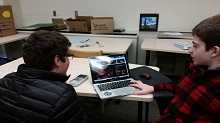Batavia, Illinois, December 21, 2021 — To support school district science programs in delivering comprehensive content and customizable labs across science subject areas, Flinn Scientific recently launched the PAVO platform. This all-in-one solution for middle school, high school, and advanced science levels helps educators support digital and hands-on learning, facilitate inquiry-based exploration, and differentiate instruction using labs, embedded safety resources, test prep, formative and summative assessments, and multi-level reporting tools.
“We wanted to figure out a way to bring all of the rich resources Flinn has under one umbrella to make it easy for educators to offer dynamic, hands-on learning in science classrooms. The PAVO platform brings an unparalleled depth and breadth to science instruction, while focusing on inquiry, investigation, and exploration,” said Michael Lavelle, CEO of Flinn Scientific. “In one platform, PAVO provides all of our digital resources and labs, accessible by grade or subject area, to help educators deeper engage students in hands-on and digital learning.”
All of PAVO’s content is aligned to the Next Generation Science Standards to ensure students are practicing and mastering key concepts in the major science areas, including chemistry, biology, environmental science, physics, physical science, life science, Earth and space science, and STEM. The content includes more than 7,000 customizable lessons, labs, assessments, and safety courses and certifications, as well as 3,200-plus instructional videos, lab videos, and augmented and virtual reality simulations that bring science to life for students.…Read More

